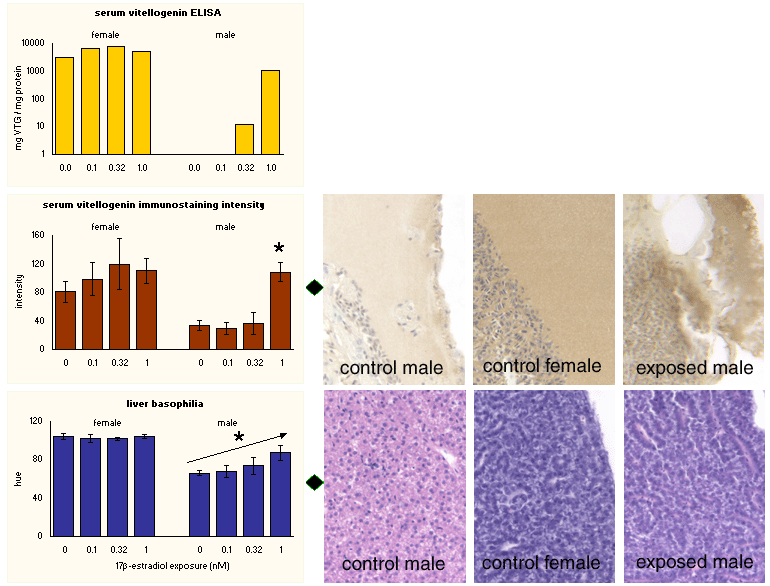 markers of vitellogenesis1
markers of vitellogenesis1Exposure to estrogen induces vitellogenin expression in the liver. The resulting high mRNA levels in hepatocytes produce condition-dependent basophilic staining with H&E
 . The level of basophilia can be expressed as a mean (reversed) hue value
. The level of basophilia can be expressed as a mean (reversed) hue value of a representative area.
of a representative area.After its production in the liver, vitellogenin is delivered to the circulation. It can be measured by a specific ELISA
 , or detected with immunohistochemistry. Immunostaining intensity can be expressed as mean intensity level
, or detected with immunohistochemistry. Immunostaining intensity can be expressed as mean intensity level of a selected area, preferably of a standardised serum compartment; the microphotographs show condition-dependent vitellogenin immunostaining of the serum in the heart
of a selected area, preferably of a standardised serum compartment; the microphotographs show condition-dependent vitellogenin immunostaining of the serum in the heart .
.Liver hue and serum immunostaining intensity both correlate well to ELISA values (R2=0.88 and R2=0.65, respectively, for this particular set of values).
Reference
- Van der Ven-LT, Holbech-H, Fenske-M, Van den Brandhof-EJ, Gielis Proper-FK, Wester-PW. Vitellogenin expression in zebrafish Danio rerio: evaluation by histochemistry, immunohistochemistry, and in situ mRNA hybridisation. Aquat Toxicol 2003;65:1-11.